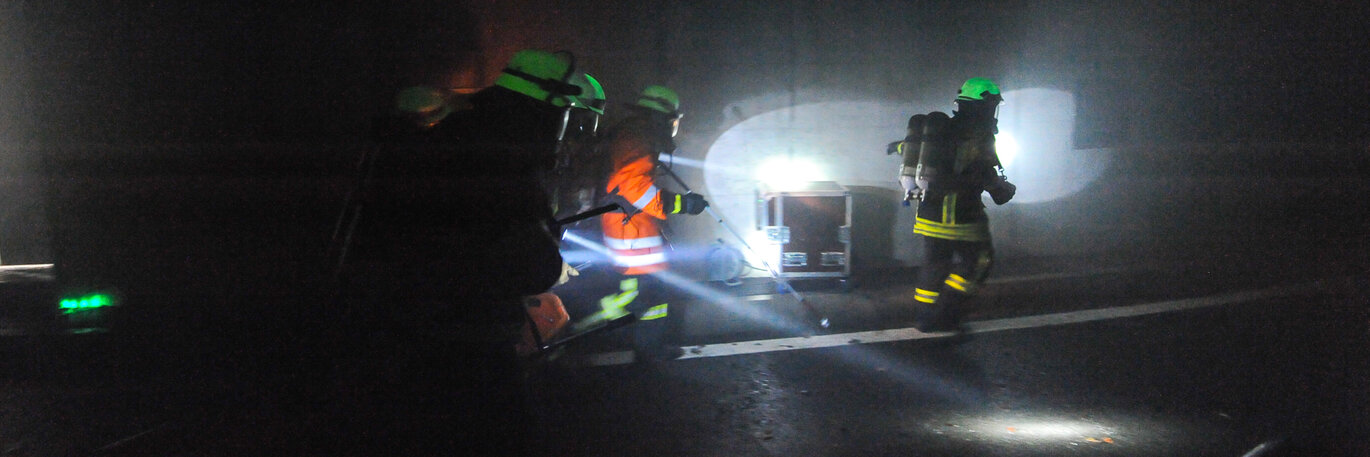The International Fire Academy recommends to always proceed towards the fire in tunnels when reconnoitring or performing search & rescue. This article explains in detail why this can significantly reduce the risks of firefighters.
Penetration depth is a hazard
One of the most critical elements of self-protection is to ensure a safe return path. This is particularly important for fires in tunnels and similar underground transport systems because the penetration depths - and thus also the return path - can be several hundred meters long.
The graphic below shows the following case: A team goes from emergency exit 2 (EE 2) towards the fire to reconnoitre or to search & rescue. If the heat increases because the fire intensifies, the team can retreat towards EE 2. Thereby its heat load decreases with increasing distance from the fire.

The second graphic shows the following situation: The team goes from emergency exit 2 (EE 2) towards emergency exit 1 (EE 1) and thus away from the fire. That can go well. But what if the team encounters an insurmountable obstacle on its way to EE 1 or if EE 1 is blocked? Then the team could try to retreat in the direction of EE2. However, if the fire has increased in the meantime, the temperatures on the downstream side increase. When retreating, the team would be exposed to a growing heat load, which could become critically high. In the worst case, the team would be trapped between the obstacle or EE 1 and the oncoming heat.

Always expect obstructions
As the two graphs show, it is much less risky to reconnoitre or to search in the direction of the fire. You can always expect insurmountable obstacles. The picture below shows two examples from deployments. Emergency exits can be blocked. In this case, the cause was a traffic accident, which significantly damaged the sliding door of the emergency exit. The sliding door could not be opened for some time until the repair. In the fire of a freight train in the Simplon Tunnel on 9 June 2011, steel pipes came loose from a freight car as a result of the heat and made the path impassable.

Because obstructions can be dangerous for the firefighters, they are an integral part of the drill scenarios for the practical training of the International Fire Academy. In the Balsthal training tunnel, for example, vehicles are placed in such a way that they block the way, and the practitioners have to find a solution for it.

Communicate the direction of penetration precisely
In the daily training operations, we experience again and again that a team thinks that it has to decide for itself in which direction it should proceed. However, this decision should lie with the incident commander or their section leaders and be communicated precisely by them. Starting from the graphics shown above, the assignment could be: «Search & rescue from EE 1 to EE 2!». In any case, the team must report in which direction they are going before entering. First, to reconfirm the order and thus to be able to correct any misunderstandings in time. Secondly, the personnel tracking air management need to know in which sector the team is residing.
Such messages are just one of many examples of the immense importance of communication at the operation site. Whether a multi-storey residential house or a large tunnel system: Clear orders and precise messages can be vital and should therefore be trained practically regularly.



